by Tom Gaylord
Writing as B.B. Pelletier
This report covers:
- Design an Airgun
- Godfather’s Gold Gun giveaway
- Reload a cartridge
- Types of cartridges
- Rimmed and rimless cartridges
- Resize and deprime
- Bell the case mouth
- Prime each case
- Put powder in the case
- Powder measure
- Insert the bullet
- Summary
Design an Airgun
Just a reminder — the Design an Airgun contest ends on this Friday, October 16. The winner will be the niftiest design that most people can build. The winner will receive the American Zimmerstutzen as a prize. I have to limit the contest to residents of the United States because of international shipping laws but readers from other countries are welcome to show us their designs.

The winner of the Design an Airgun contest will win the American Zimmerstutzen.
Godfather’s Gold Gun giveaway
Don’t forget that some lucky U.S. reader this month will also be drawn to receive the Godfather’s Gold Gun — an Ataman AP16 pistol designed by B.B. Pelletier. So, there is a lot going on this month!

The Godfather’s Gold Gun will belong to one lucky blog reader after October is over.
Reload a cartridge
Today we are continuing our tutorial on reloading a cartridge. We will actually put a cartridge together in this report.
Types of cartridges
There are several different types of cartridges. Some have bases that are rimmed. Those rims are what the reloading equipment holds onto while the case is run through all the reloading steps. Revolver cartridges like the .38 Special and rifle cartridges like the 30-30 are rimmed.
Cartridges that work in semiautomatic actions have cases that are rimless. Those would be like the 9 X 19 mm Luger pistol cartridge and the 5.56 mm rifle cartridge.
Rimmed and rimless cartridges
Each type of cartridge, rimmed and rimless, is held by the reloading press at its base. This requires some kind of shellholder for most reloading presses, though the Forester press has an automatic shellholder that opens to grab any cartridge base.

Rimmed .30-30 and .38 Special cases on the left — rimless 5.56 mm and 9X19 mm on the right.
Resize and deprime
The first step is to resize the cartridge case and remove the primer from its pocket. Resizing makes the case a standard size to fit the chambers of all guns. Today I will take it one step further and show you what can be done with a sizing die. Sometimes, one caliber case can be turned into another!
I was aware that the .38-55 Winchester (or Ballard, as it was called when it was first introduced in 1884) is the case that the .30-30 Winchester is based on. To turn one into the other all you have to do is resize the .38-55 case in a .30-30 sizing die! I no longer have a .38-55 rifle, but I do have a .30-30, so I took the few .38-55 cases I had laying around and turned them into .30-30 cases.
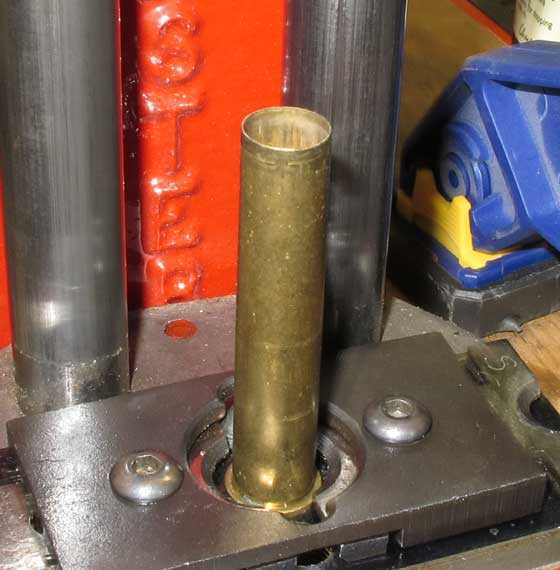
A .38-55 case sits in the press, ready to go into the sizing die.

After running it into the .30-30 sizing die and back out, this .38-55 case has been turned into a .30-30 case. Only the headstamp gives away what it used to be.
After this is done, the primer pocket must be cleaned, so the new primer can be inserted.

This .38-55 has been resized into a .30-30 case, but its primer pocket still needs to be cleaned.
Once all the cases are sized and de-primed, I dump them into the tumbler that I showed in Part 1 and tumble them for about 12 hours. I do it overnight, so no time is wasted.

This is how they come out of the tumbler. Yes, this is a different case, because I already loaded the other one.
Bell the case mouth
At this time the mouth of the case is expanded or “belled” so it doesn’t shave off part of the bullet when it’s inserted and pushed home. This is especially important when loading lead bullets, as I usually do. These days it’s hard to find jacketed bullets to buy, so my bullet casting has kept me and three other reloaders shooting. There is usually a special loading die to expand the case mouth, but when there isn’t, I use a .50-caliber bullet from a .50 BMG round to do it.

My .30-30 die set doesn’t have a die to bell the case mouth, so I use this .50-caliber bullet.
Prime each case
Now it’s time to put a fresh primer in each case. This can be done either with the reloading press or with a separate priming tool, like I showed in Part 2. Make sure the primer is flush with the bottom of the case or slightly below.
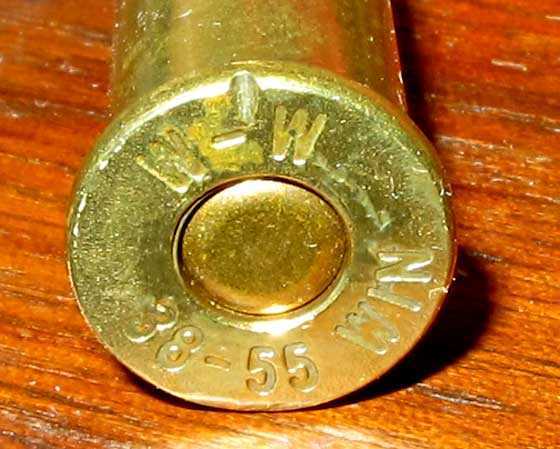
A fresh primer has been inserted. As long as the primer pocket is clean the primer will fit correctly. The notch on the rim of this case was for aligning each cast bullet (that had been loaded into the case) in the same orientation, to help with accuracy. That was for the Ballard.
Put powder in the case
There are many different kinds of smokeless gunpowder. Some burn very fast and others burn very slow. Fast-burning powders are usually for short-barreled firearms like handguns. Slower-burning powders are for rifles and some magnum loads in handgun cartridges. The reloading manual tells you what the safe loads are for each powder and bullet weight/type (lead or jacketed). I follow those recipes scrupulously. Safety is always the first concern for a reloader!
Powder measure
To measure the powder you put into the case a powder measure can be used. Since different powders come in different-sized granules and coarseness, you use different measures for different powders. It’s not one measure per type of powder. More like one measure for flake and ball powders and another one for granulated (like small grains of rice) powders. However, a few, like the RCBS Uniflow, work well with all powders.
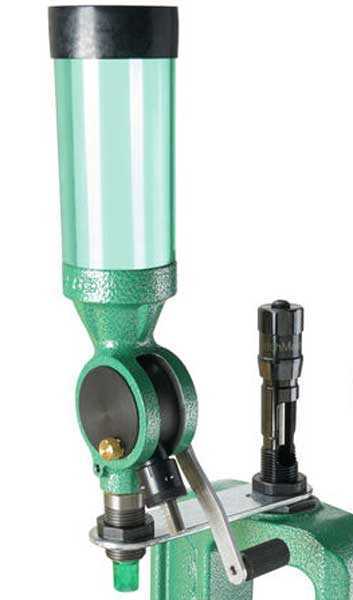
The RCBS Uniflow powder measure I use works well with all powders.
Once they are adjusted, powder measures will throw charges that are within 0.2 grains of each other — at least the ones I use will with the types of powders I use. That’s close enough for general shooting and hunting ammo. But for shooting small groups, it’s best to weigh each powder charge by hand. You set your measure to throw a charge that’s a few tenths light and then use a trickle charger to increase it to exactly the rght amount. Naturally every charge is weighed on a powder scale.
Lee also makes a set of special dippers that measure a load of powder reasonsbly well. With some practice and care you can usually stay within 0.3 grains of the desired charge.
Insert the bullet
The last step is to insert the bullet and ram it home with the press. As the press’s ram gets to the end of its stroke, the die is set to crimp the case mouth into the bullet. At least that is what I have my dies set to do. This step does not take force, but rather a feel for things. It’s easy to use too much pressure on the press handle. Everyone who reloads has a pile of cartridges where something went wrong. You try to disassemble as many of your mistakes as you can to save the components, but some cannot be saved.
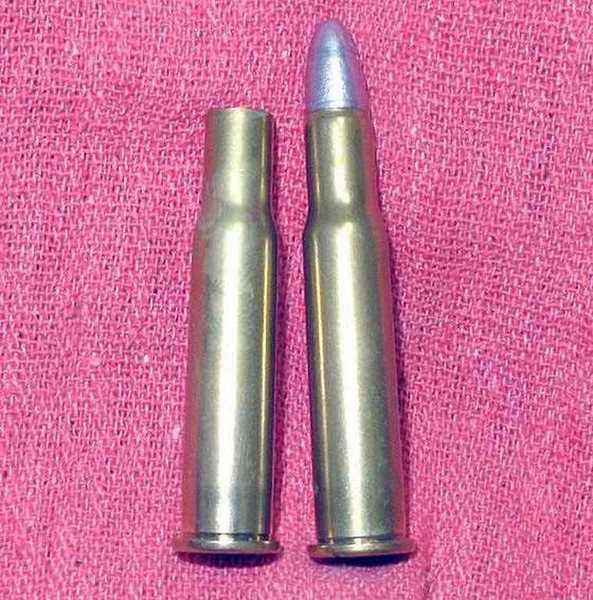
It took longer for you to read this report than it took me to do everything needed to turn the empty cartridge case on the left into a fresh new loaded round. Since I made the bullet, this .30-30 cartridge cost me a little more than a nickel!
Summary
Reloading is a good way to save a little money, and a great way to make better ammunition. And, when supplies are short, such as they are these days, it is the only way to continue shooting.
I went through all the steps today pretty fast. Let me know what you need to have explained better.

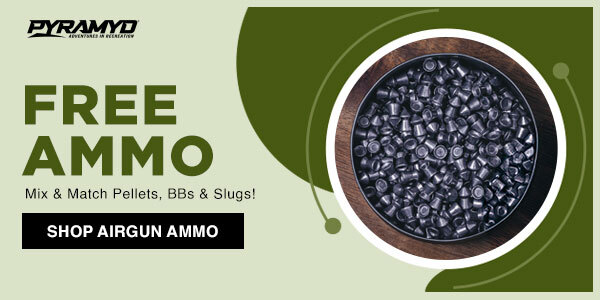
Don’t have a powder burner myself, nevertheless I really enjoy your articles on it so far. I’ve always wanted to know how to reload, and feel the more I learn of all guns the more it will help me to better understand airguns.
I feel the exact same way – I learn a lot from these topics.
BB, thanks for another clear tutorial. I appreciate the usefulness of reloading to increase consistency and accuracy. What puzzles me is the continued scarcity of commercial ammo. Why does the supply not meet the demand? Seems like a lost business opportunity.
B.B.,
Do you neck size or size the entire case? I couldn’t tell because you went right into resizing from the 38-55 to a 30-30. It might confuse more than me about simple resizing of a used 30-30 for another reload as a 30-30.
Errata in: Powder Measure end of second to last Para: “Naturally every charge is weighed (on? or some other way of saying this entire sentence?) a powder scale.”
And in: Insert the bullet
“The last step is to insert the bullet and ram it home with the press. As (it)the presses’ ram gets to the end of its stroke, the die is set to crimp the case mouth into the bullet”
Great clear write-up of a complicated part of the process that scares lots of folks.
shootski
shootski,
Fixed them. Thanks,
BB
B.B.,
For safety I have read that some have advised placing primed empty cases primer side up and after loading to place the loaded cases primer side down to avoid double loading. How did you pull out the .50 caliber bullet out of the casing? I don’t see any marks from pliers.
Siraniko
PS Section Insert the bullet 1st paragraph 2nd sentence: “As itthe (the) presses’ ram gets to the end of its stroke, the die is set to crimp the case mouth into the bullet.”
Siraniko,
Thanks. It’s fixed.
I visually inspect each case to avoid double-loading.
I bought the .50 caliber bullet online. I don’t know how it was pulled.
BB
Siraniko,
There are a number of ways to pull a bullet after it has been built into a complete cartridge. How or even IF (could have been purchased in a bulk bullet purchase for individual resale) BBs .50 cal. bullet was pulled is probably a Kinetic Bullet Puller: https://www.amazon.com/Hornady-50090-Kinetic-Bullet-Puller/dp/B000PD5UR0
other methods obviously exist.
shootski
I shudder to think of having to swing a kinetic puller sized for pulling a 50 BMG! Well, maybe not a problem for John Henry. But he was a steel drivin’ man.
A great write up as usual.
When I saw the notches on the headstamp between the W-W, I knew what they were for.
A couple of questions, and I may be opening a can of worms you don’t want opened yet.
The 38-55 is about a millimeter longer than the 30-30 case to start with, and when I have sized cartridge necks down to a smaller size, The cartridge length increases (the extra brass has to go somewhere.)
Did you trim the modified cases to the correct overall length?
And if so, how much did you have to trim off?
And correction listed below.
Ian..
Ian,
I jumped forward today to get to reloading. There are still many things to cover, including trimming cases to length. That’s still to come.
Good catch and I corrected it.
BB
‘As itthe presses’ ram…..’ The press is singular, so should be ‘press’s’.
Also, did you mean Lee as the maker of the powder dippers?
Paco,
Yes, I meant Lee.
And that catch on the singularity issue was super. Good on you for not sleepijng in 9th grade English! 🙂
BB
BB,
Another good article on something I know little about.
Chris
B.B.
Can rim fire cartridges be reloaded?
-Y
Yogi,
There have been several attempts to make rimfires reloadable, but none have really been successful.
BB
Yogi,
The equipment you would need to reload them is prohibitive. You would have to clean the case, put liquid primer solution inside the base and spin the casing so it would flow into the rim and then allow it to dry.
RR,
And that doesn’t cover the initial primer dent, where no priming coupound could flow. It would aslmost have to be shot in a single shot to position the rim for an undented spot.
BB
BB,
That would be relatively easy in any rimfire. Hardly worth it though. Now these guys with that .17 super duper rimfire might have something to worry about. I wonder if it will end up going the way of the 5mm Magnum?
Wow! .38-55 cases are usually very hard to get. Sell them and buy .30-30 cases and have some money left over to spend on other components. I made a few .38-55 cases from .30-30 cases when I had trouble finding the .38-55 cases.
Jonah,
So instead of sizing them down you blew them out. Another lesson.
BB
BB,
My Dad and I used to make .25-06 and .270 Winchester from .30-06 casings. We also would make .22-250 and .243 from .308 Winchester or 7.62 NATO casings. The 7mm-08 and the newest 6.5 Creedmoor are also from the same casing. We made .221 Fireball from .222 casings and .222 from .223 or 5.56 NATO.
It is easier to resize civilian brass than military brass as the military specs thicker walled and based casings to withstand the heavier loads they generally use.
I’m guessing that this batch of 30-30’s are for your Rem. 788.What kind of velocity are you shooting for and is it as accurate as the soft points?
Rk,
Yes it is for the 788. I never worry about velocity, but I’m sure it will be around or less than 2,000 f.p.s. I go for accuracy only.
I don’t have a lot of experience shooting cast bullets in this rifle, so I’m at the beginning of the learning curve. I was able to put 10 jacketed bullets into 3/4-inches at 50 yards so far.
BB
BB
I assume you melt down used pellets from your pellet traps for casting into bullets. Do you find the lead content consistent enough for reasonable range accuracy?
I was not aware that Forrester shell holders were universal. I learn stuff everyday here. Good report.
Deck
Not entirely universal. There are two sets of double-ended jaws available- Standard and Large/Small. The four sizes available cover a wide range of case sizes. There is also an adapter for regular shell holders.
The name of the company that makes the Co-Ax press (originally Bonanza) is Forster.
Pacoinohio
The names Bonanza and Forster are familiar but I mostly use RCBS and Lee dies and presses.
Thanks,
Deck
Deck,
I used a Lee progressive press until the nylon cam wore out and a RockChucker for several decades. But the Forster has them all beat, in my opinion.
BB
Thanks B.B. – I like this kinda stuff!
Reloading is something that I always wanted to get into but by the time I had a place the I could setup in and had the cash for the equipment my interests had drifted to archery and bow hunting.
Still, I find the process intreging. I enjoy working with metal (I am setting up a forge to do some blacksmithing), reloading involves a lot of that – swaging bullets and reforming the cases.
Will you be discussing annealing at all?
Hank
Hank,
I will be discussing casting bullets in a future report. Meanwhile, perhaps this will suffice?
/blog/2009/09/turning-lead-into-bullets-part-2/
BB
Thanks B.B.
Seen that before, always good to review stuff though!
Been thinking about using my electric log-splitter for swagging slugs now that I have the tools to make the dies.
Hank
Today’s blog has reminded me; I wish to live in a perfect world, where 16 gauges and .410 bores are reasonably priced. :b
Fish,
I used to have a Spanish made double barrel .410 that I paid $33.00 for back in the late 60’s.
Always brought it on fishing and camping trips to have some sort of firearm with me (pistols are illegal to carry here in Canada).
Hank
Vana2,
I was talking about the ammo; I should’ve been clearer on that. My bad.
16 & 410 ammos were hard to come around and expensive – the last time I checked.
BB, Is there speed limit for a cast bullet? If shot too fast, will a lead bullet/pellet ride over the lands and grooves of the barrel? I am curious about the annealing too. The notch on the rim is so the fire formed case is oriented to the barrel as consistantly as humanly possible? This is great stuff, I bet the Ballard is simplicity itself.
I think the side by side photo of the now antique, commercially designed cartridges, and the mil-spec cartridges
shows the challenges facing ammo makers today. The 100 year old rounds have aged very well indeed, I would say.
Do folks still buy 6mmPPC from the factory? Or, is that a specialty round that is mostly handloaded?That would be an example of a wildcatted mil-spec round?
R
Rob,
Here is the Ballard:
/blog/2013/05/ballard-report-part-1/
/blog/2010/11/the-art-of-collecting-airguns-part-2/
/blog/2011/01/the-art-of-collecting-airguns-part-6/
/blog/2011/03/the-art-of-collecting-airguns-part-8/
I can’t answer the 6 mm PPC question. Maybe someone else can?
BB
Very interesting topic. How big a deal is work hardening the brass when you resize it like that?
CB
CB,
With some cartridges like RidgeRunner was talking about — .30-06 to .243, etc — it does matter. So you anneal the case necks.
With these .30-30s it’s no big deal.
BB
So no loading pre-primed LR brass for the do it yourselfer? My experience is that .22’s are as finicky about ammo as a pellet rifle, and if you find something that works, buy allot of it. .22 ammo seems pretty expensive compared to the accuracy and economics of the modern pellet gun, a .30-.30 seems like a smart choice compared to those two.
R
BB
You talk about tumbling as a way to clean the primer pockets. Do you use a different media for cleaning as opposed to polishing, or does one do both at the same time?
Thanks
Ray
1stblue,
Think that it is more that the rimfire ammo is inconsistent than that the rifles are finicky.
I tested a number of popular brands a couple of years ago and they ranged from 60 to 110 fps difference in velocity over 10 shots. Was pretty surprised at that.
Hank
Hank,
I do not know what typical spreads are for (factory) rim and center fire ammo is,… but 60-110 seems pretty bad. I wonder just what is considered “good” for either type of ammo?
Chris
Chris USA,
CONSISTENCY!
“I wonder just what is considered “good” for either type of ammo?”
Just like fine wine it is your taste that (should) drive it not price tag or reviews by wine (whine) snobs!
Interestingly in rim fire you can buy the EXACT same brand and version of rimfire ammo but if you mix rounds from different lots you will virtually NEVER think that it is good ammo. There seems to be a bit more consistency in centerfire ammo but the PRIME reason people reload is to gain better accuracy by consistency of process. Yes it can also be less expensive but that can also become an Apple to Orange comparison if you buy super quality components.
shootski
Shootski,
I am all about consistency, eliminating any variables and quality components. Like sorting pellets,… I would find myself hand loading too.
Don’t mix lots of PB ammo is the takeaway,………….
Chris
Chris,
That was the first and only time I checked rimfire ammo so I don’t know what is typical. (Per shootski’s comment, all ammo came out of the same box’s – didn’t mix from different batches)
My friend shoots serious. 22 rimfire target (50 yards) and he buys the very expensive ammo. From what I have seen, a half decent PCP would compete pretty well against the rimfires.
Hank
Hank,
Yea,.. it sounds like “don’t mix lots” of powder burner ammo is the rule. I think I would take a quality PCP too for only 50 yards if only shooting for group size.
Chris
Ray,
You need to read Part 1.
BB
No joke about the ammo shortage!
Went to Gainesville (FL) Bass Pro – no .22 of ANY kind, no 9mm, .38 and more – or less, sarcasm intended. There was .32 auto, so picked up a couple boxes, and there was .44 jacketed deer/bear loads, so bought a box of that. Not cheap, but supply/demand economics rule. If you could use .17, 30-06, .300 Winchester Magnum, 7mm, 6.5 Creedmoor and 12GA, fine, otherwise you were out of luck and ammo.
Even airgun pellets were scarce; saw a couple tins of Daisy .22 and .177 pellets. That was it.
What are your sources for lead to make bullets, besides the obvious, such as reclaimed pellets? I remember when I was considering casting .58 miniés a few years ago reading about the pitfalls of melting down wheel weights and other non-pure lead scrap. We sure live in too interesting times.
FawltyManuel,
I used to meld down wheel weights to cast sinkers an jigs all the time.
Last year I got a slingshot pellet mold and picked up 50 pounds of wheel weights to make a couple of batches. Turned out that only 10% were usable lead/antimony, 25% were steel, some were potted plastic and the rest were an alloy of some type that melted only at very high temperatures.
I’m looking for a new source of lead myself.
Hank
We’re going to have to be creative given the shortages of everything; fear the politics of the present won’t help. Thanks for sharing your experience.
FawltyManuel,
Check out:
rotometals.com
shootski
Appreciate that – will take a look. And maybe start keeping a lookout for genuine scrap lead.
I present, for your consideration, another entry into BB’s Airgun “as long as it shoots something at a target” Design Contest – The Penny Arcade Shooter.
What we have here is a catapult style penny shooting three shot derringer. Three cents can be loaded into the “magazine” cut out on top and each in turn is automatically loaded into the chamber/ barrel as the charging handle is pulled back. It has a spring loaded penny catch and trigger mechanism, straight blade brass trigger, and open sights. It is made from Red Oak, .125” brass rod, some thin plywood (.15”), a small bit of music wire, and rubber bands.
The design could be built with only the most basic woodworking tools, and the materials could be altered to what is on hand/ available. (Paint stirrers, popsicle sticks, small nails and pen spring?) The design could be scaled to the denomination… ahem..caliber of your choice. Ammunition is likely already on hand, and is cheap, especially since it can be reused.
I built it in a day, along with an arcade (cardboard box with rod running through it from which 3D targets are suspended ) that my partner and I got a kick out of using indoors that evening. She got the hang of it quickly and was hitting a 4” target at 5 meters.
One could even just build the barrel and plunger mechanism and use rubber bands to manually shoot coins. But, if you want my two cents, it is worth building the handle and trigger mechanism (it does not have to be that precise). Just as the act of marksmanship brings with it the joy of seeing your sphere of influence projected beyond the direct reach of your hands, a similar enjoyment can be experienced with the construction and use of a mechanism by which you touch/ act upon one thing and the effect takes place upon something else. Go on, get your Rube Goldberg on.
Thanks for checking it out. I welcome any comments or suggestions.
Cocked
Parts 1
Parts 2
Very nice Airman!
Will make one up to try!
Hank
‘Praise from Caesar.’ From what I have seen of your work, you will easily work out the details. Have fun!
AOTB,
Very well done! Quite impressive!
Chris
Thanks! I appreciate the feedback. Pretty easy to build if you want to give it a go.
Airman,
Very cool gun, thanks for sharing.
Mike
Thank you for checking it out.
Cool!
Thank you for saying so!
Great guns! That’s a cool penny launcher, Airman.
Thanks for the positive feedback. I appreciate the kind words.
Anyone besides me notice and like the similarities in the shape of the wrist on the stocks of the American Zimmerstutzen and the 1896 New King? I really like the “shotgun style” eye to sight alignment and the almost pistol grip shape.That shape seems ideal to me on low powered lower recoil plinkers and wing shooters.
Hey all,
I am going way off subject with this one.
I have been rebuilding a Crosman 101 and have run into a little problem. There is an odd size o ring that goes between the plenum and the valve assembly. I tried to make one, but it is not working. Does anybody know what size this o ring is and where I might find one?
I could tear into it and measure, but I would rather not do that until I had an o ring to put in there. I could also buy a rebuild kit, but I do not need most of it, just the one o ring. Help me!
RidgeRunner,
You are talking about the flat washer at the fron of the compression chamber that goesvinto the compression tube?
It will cost you…$7.99 unless Crosman will tell you or has the parts list on line.
Edit:. RR you will find a free copy in Airgun Warriors in the Library 10MB
Crosman Pn. 130-35
shootski
Shootski,
Thanks for the link. I should have looked there in the first place. That is where I bought my rear sight assembly.
As for the o ring, I was looking for the exhaust valve body gasket, CRS105-031.
If I knew the size, I could probably get one a lot cheaper. Ah well.
Thanks BB for a nice ‘off subject’ article. Your explanation of the resizing process reminded me when, many years ago, I was making .30 Herrett ammo for my TC Contender out of 30-30 brass. I kind of remember it was pretty stout.
A question about tumblers, I have used for many years a vibratory Lyman tumbler with corncob media. In general it does a good enough job, but super-dirty primer pockets and tarnished brass are the weak points. Do you find the rotary wet tumbler with SS pins as media more effective?
Thanks,
Henry
Henry,
Yes, the stainless steel needles I use work wonders!
BB